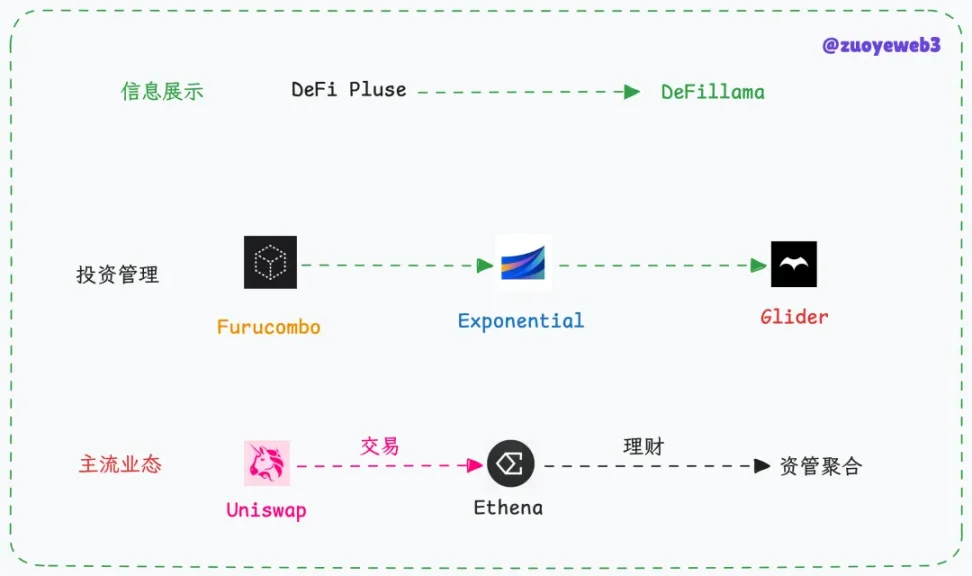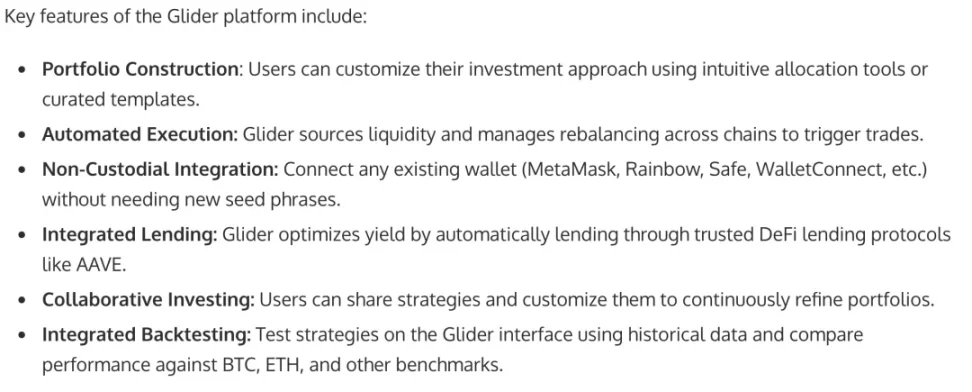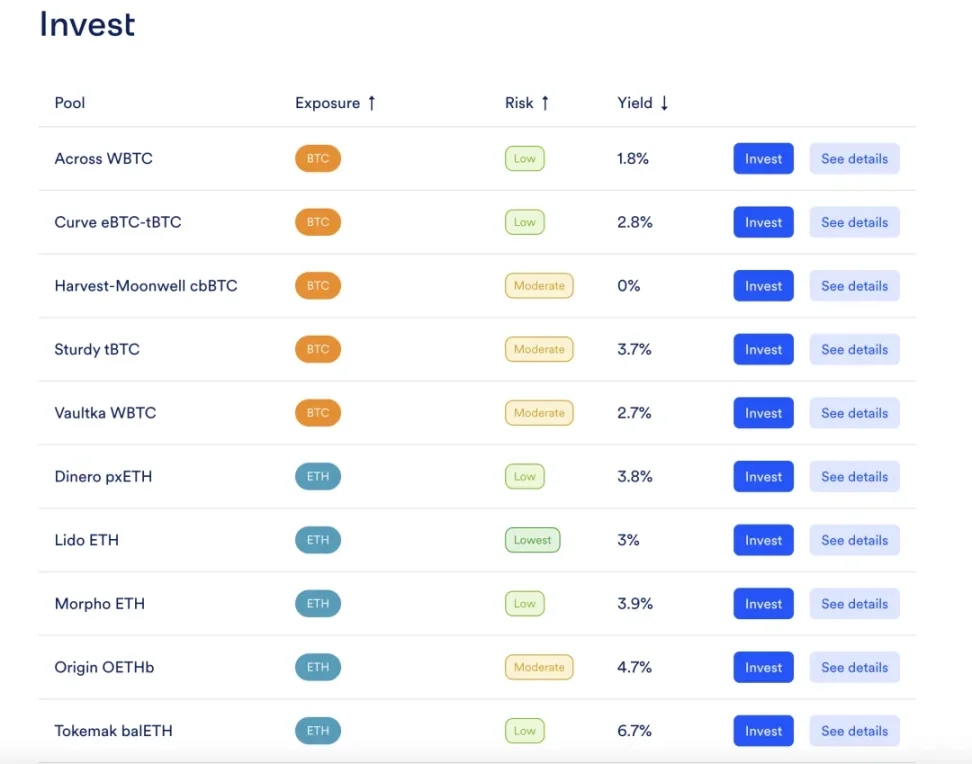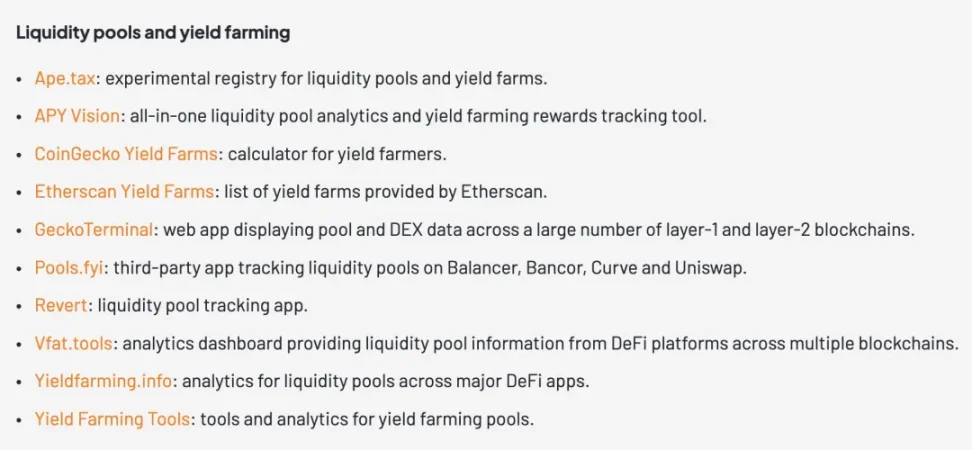- Complex on-chain activities are being simplified, and the technological infrastructure has matured;
- Everything old faces a historical opportunity for reshaping, and new opportunities have emerged;
- Intent, TG/Onchain Bot, and AI Agent all need to address authorization issues.
On April 16, Glider completed a $4 million financing round led by a16z CSX (Startup Accelerator), positioning itself in the seemingly simple yet complex field of on-chain investment, benefiting from the technological trends of Intent, LLM, and others. However, DeFi as a whole indeed needs to be restructured to simplify investment thresholds.

Image caption: The development history of DeFi tools, image source: @zuoyeweb3
The era of DeFi Lego is over; the era of securely coupled wealth management has arrived.
Past: Furucombo's premature demise
Glider started as an internal startup of Anagram at the end of 2023, initially in the form of Onchain Bots, which combined different operational steps to facilitate user investment and usage.

Image caption: Glider's functional outlook, image source: businesswire
But this is not a new business model; helping users manage their finances is a long-standing business, as seen in TradFi and during DeFi Summer. Currently, Glider is still in the internal development stage, and its general ideas can be outlined from the PR content:
- Link existing DeFi tools, including leading players in various sectors and emerging protocols, to build a B2B2C customer acquisition logic through API integration;
- Allow users to build investment strategies and support sharing to facilitate co-investing, copy trading, or collective investment for higher returns.
With the combination of AI Agent, LLM, intent, and chain abstraction, building such a stack is not technically difficult; the real challenge lies in traffic operation and trust mechanisms.
The flow of user funds is always sensitive, which is also the most important reason why on-chain products have not yet overtaken CEX. Most users can accept decentralization in exchange for fund security but generally do not accept decentralization that increases security risks.
In 2020, Furucombo received investments from institutions like 1kx, aiming to help users reduce confusion when facing DeFi strategies. If forced to draw a comparison, it resembles today's GMGN and other Meme Coin tools, except that the DeFi era focused on combining yield strategies, while GMGN is about discovering high-potential, low-value memes.
However, most people did not stay with Furucombo; on-chain yield strategies are an open market where retail investors cannot compete with whales in terms of server capacity and fund volume, meaning most yield opportunities cannot be captured by retail investors.
Compared to the unsustainability of yields, security issues and strategy optimization are secondary; the high-return era leaves no room for sound wealth management.
Present: The era of asset management for the masses
ETFs for the rich, ETS for retail investors.
ETF tools can operate not only in the stock market; exchanges like Binance had already experimented with them in 2021. The technological aspect of asset tokenization ultimately gave rise to the RWA paradigm.

Image caption: Exponential page, image source: Exponential
Furthermore, how to achieve the on-chain version of ETF tools has become a focus for entrepreneurs. From DeFillama's APY calculations and displays to Exponential's continuous operation, it indicates a market demand for such tools.
Exponential is strictly a strategy sales and display market, with vast specialization and precise calculations, aided by both human and AI in strategy decision-making. However, on-chain transparency means no one can truly hide efficient strategies from being imitated and modified, leading to an arms race that ultimately flattens yields.
In the end, it becomes a boring game of big fish eating small fish.
Yet, it has never been standardized or developed into projects that redefine the market like Uniswap, Hyperliquid, or Polymarket.
Recently, I have been pondering whether the end of the Meme Supercycle makes it difficult for the old forms of DeFi to revive. Is the industry's peak temporary or permanent?
This relates to whether Web3 is the next step for the internet or a version of FinTech 2.0. If it is the former, then the way human information flow and capital flow operate will be reshaped; if it is the latter, then Stripe + Futu Niuniu is the endpoint of everything.
From Glider's strategy, it can be deduced that on-chain yields are about to transform into an era of asset management for the masses, similar to how index funds and 401(k)s contributed to the long bull market in U.S. stocks. The absolute capital volume and a vast number of retail investors will create a huge demand for stable income.
This is the significance of the next DeFi; beyond Ethereum, there is Solana, and public chains still need to undertake the innovation of Internet 3.0, while DeFi should be FinTech 2.0.
Glider adds AI assistance, but from the information display of DeFi Pulse to Furucombo's initial attempts and Exponential's stable operation, a stable on-chain yield of around 5% will still attract a foundational user base beyond CEX.
Future: On-chain income-generating assets
As the crypto market has developed, only a few products have truly gained market recognition:
- Exchanges
- Stablecoins
- DeFi
- Public chains
Any remaining product types, including NFTs and Meme coins, are merely phase-based asset issuance models; they lack sustainable self-maintenance capabilities.
However, RWA has been taking root and growing since 2022, especially after the collapse of FTX/UST-Luna. As AC stated, people do not genuinely care about decentralization; they care more about yield and stability.
Even without the Trump administration actively embracing Bitcoin and blockchain, the productization and practicality of RWA are accelerating. If traditional finance can embrace digitization and informatization, there is no reason to abandon blockchainization.
In this cycle, whether it is complex asset types and sources or the dizzying array of on-chain DeFi strategies, they severely hinder CEX users from migrating on-chain. Regardless of the authenticity of mass adoption, at least the vast liquidity from exchanges can be siphoned off:
- Ethena converts fee income into on-chain yields through interest alliances;
- Hyperliquid pumps perpetual contracts from exchanges onto the chain via LP Tokens.
These two cases prove that liquidity can be brought on-chain, and RWA proves that assets can also be brought on-chain. Now is a moment of industry spectacle; ETH is perceived as lifeless, yet everyone is moving on-chain. In a sense, fat protocols are detrimental to the development of fat applications. Perhaps this is the last night before public chains return to infrastructure, with application scenarios shining brightly, as dawn breaks.

Image caption: Yield calculation tool, image source: @cshift_io
Beyond the aforementioned products, vfat Tools has been operating as an open-source APY calculation tool for several years. De.Fi, Beefy, and RWA.xyz each have their focus, showcasing project APYs. The focus of yield tools has increasingly concentrated on income-generating assets like YBS over time.
Currently, increasing trust in AI for such tools will face the challenge of responsibility allocation. Enhancing human intervention will reduce user experience, making it difficult to manage.
Separating information flow and capital flow to create a UGC strategy community, allowing project parties to compete internally while benefiting retail investors, may be a relatively good solution.
Conclusion
Glider has gained market attention due to a16z, but long-term issues in the sector, such as authorization and risk, will still exist. Here, authorization does not refer to wallets and funds but whether AI can satisfy human expectations. If AI incurs significant investment losses, how will responsibility be allocated?
This world still deserves exploration of the unknown. Crypto, as a public space in a fractured world, will continue to thrive.
免责声明:本文章仅代表作者个人观点,不代表本平台的立场和观点。本文章仅供信息分享,不构成对任何人的任何投资建议。用户与作者之间的任何争议,与本平台无关。如网页中刊载的文章或图片涉及侵权,请提供相关的权利证明和身份证明发送邮件到support@aicoin.com,本平台相关工作人员将会进行核查。




